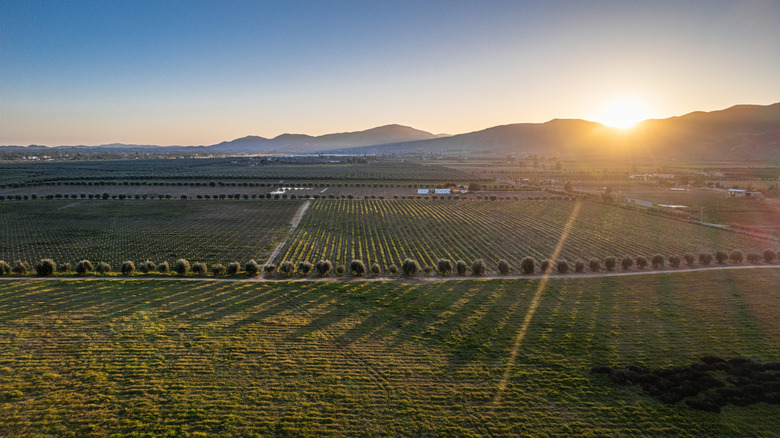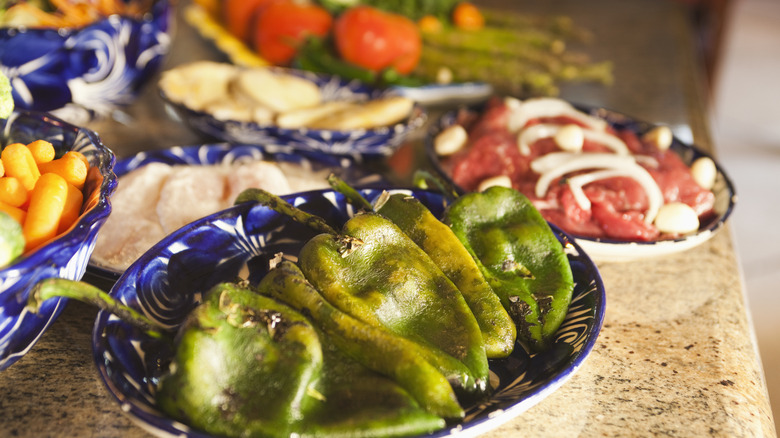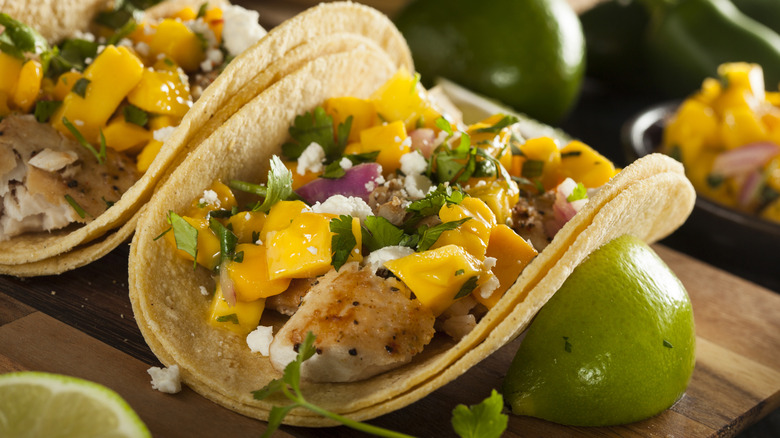A Deliciously Sustainable Farm-To-Fork Foodie Scene Flourishes In The Desert Of Baja California
While the Baja Peninsula is renowned for glitzy party time in Cabo, affordable beach towns, and amazing snorkeling spots at La Paz and Loreto, the states of Baja California and Baja California Sur deserve to be recognized for another reason: a farm-to-fork foodie scene that alone makes it worth a trip. Though the Baja California desert covers much of the region, meaning arable land is at a premium, eating a sustainable locavore diet — where the majority of ingredients in your food comes from the region — isn't hugely difficult.
On a recent trip to Loreto in Baja California Sur, I got the chance to experience more farm on my fork than I usually do. Driving to see the San Javier Mission, we stopped to visit a ranch and share a bite with the family who live there. The abuela presiding over the wood-burning stove in the back was unimpressed with my tortilla-making skills ("Bad," she tskked, and she threw my misshapen lumps into the fire), but I eagerly ate the ones she smacked to perfection between practiced hands, smeared with mashed beans and crumbles of fresh cheese. I even milked a goat, which was not as adorable as TikTok had led me to believe it would be. From tiny, family-run roadside stalls to Michelin-starred restaurants, cooks in Baja know how to make use of what the land provides and how to make it delicious.
Check out the best Michelin-starred spots in Baja California
Michelin Green Stars are awarded annually to "restaurants at the forefront of the industry when it comes to their sustainable practices," according to the Michelin website. The award is designed to recognize restaurants that "combine culinary excellence with outstanding eco-friendly commitments." Michelin has awarded Green Stars to five restaurants on the Baja California peninsula. "These visionary restaurants" — Flora's Field Kitchen and Acre in San José del Cabo, Lunario and Deckman's en el Mogor in Valle de Guadalupe, and Conchas De Piedra in Ensenada — "are pioneering the next era of sustainable dining in Mexico," says the guide. It takes dedication and focus to center sustainability in the food business, and the five green-star restaurants deserve to be applauded. But they aren't the only places you can find fresh farm-to-fork food in Baja; in fact, you might find it harder to find dishes that don't have at least some locally produced ingredients.
In addition to ranches where they raise beef, Baja also produces an abundance of peppers, tomatoes, basil, and asparagus, as well as oranges, mangoes, and dragonfruit, known as pitaya. If you are staying somewhere with a kitchenette and want to cook for yourself on your holiday, visit a farmer's market to pick up a sampling of fresh local produce. The San Jose Organic Market, Palmilla Market, Los Barriles, Cabo San Lucas's Pedregal Market, and the Todos Santos Organic Market are among the best. (If you are looking for other things to do than eat, check out our guide to the 12 best things to do in Cabo.)
From the ocean to the table
Baja California is sandwiched by the Pacific Ocean to the west and the Sea of Cortez to the east, so it makes sense that tables in the region sometimes groan under the weight of local seafood. Mackerel, sardines, red snapper, grouper, and oysters are fished locally and appear on lots of plates, as do octopus and shrimp. Traditional dishes such as ceviche and aguachiles (both which feature citrus and chunks of raw fish filets or shrimp) are just as popular as the ubiquitous fish tacos.
One of the most sought-after local foods in Baja Sur is clams, particularly "Almejas chocolatas," or chocolate clams. The clams, which are only found in the Sea of Cortez, don't taste like chocolate, which I apprehensively thought at first, but are named after their rich brown shell. I had the opportunity to watch them prepared tatemadas-style in a beachside show in Loreto, Baja's best-kept secret town. Tatemadas (charred) clams are cooked in a pit dug on the beach, covered in flaming tumbleweeds until the shells blister and burn. It's something archaeological evidence suggests has been happening on these beaches since long before the Spanish arrived and a dish you should look for when you visit Baja California.


